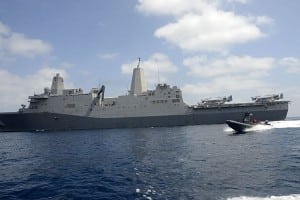
The Marine Corps is injecting its Marine expeditionary units with a small special operations detachment to facilitate greater cooperation between SOF and Marine forces.The first deployment of a Special Operations Force Liaison Element with a Marine Expeditionary Unit (MEU) wrapped up this February after successful operations in the Asia-Pacific and Middle East, said Lt. Col. Andy Christian, the Marine Corps Forces Special Operations Command officer who led the SOFLE. Before the establishment of SOFLE units, there were no formal channels for…













